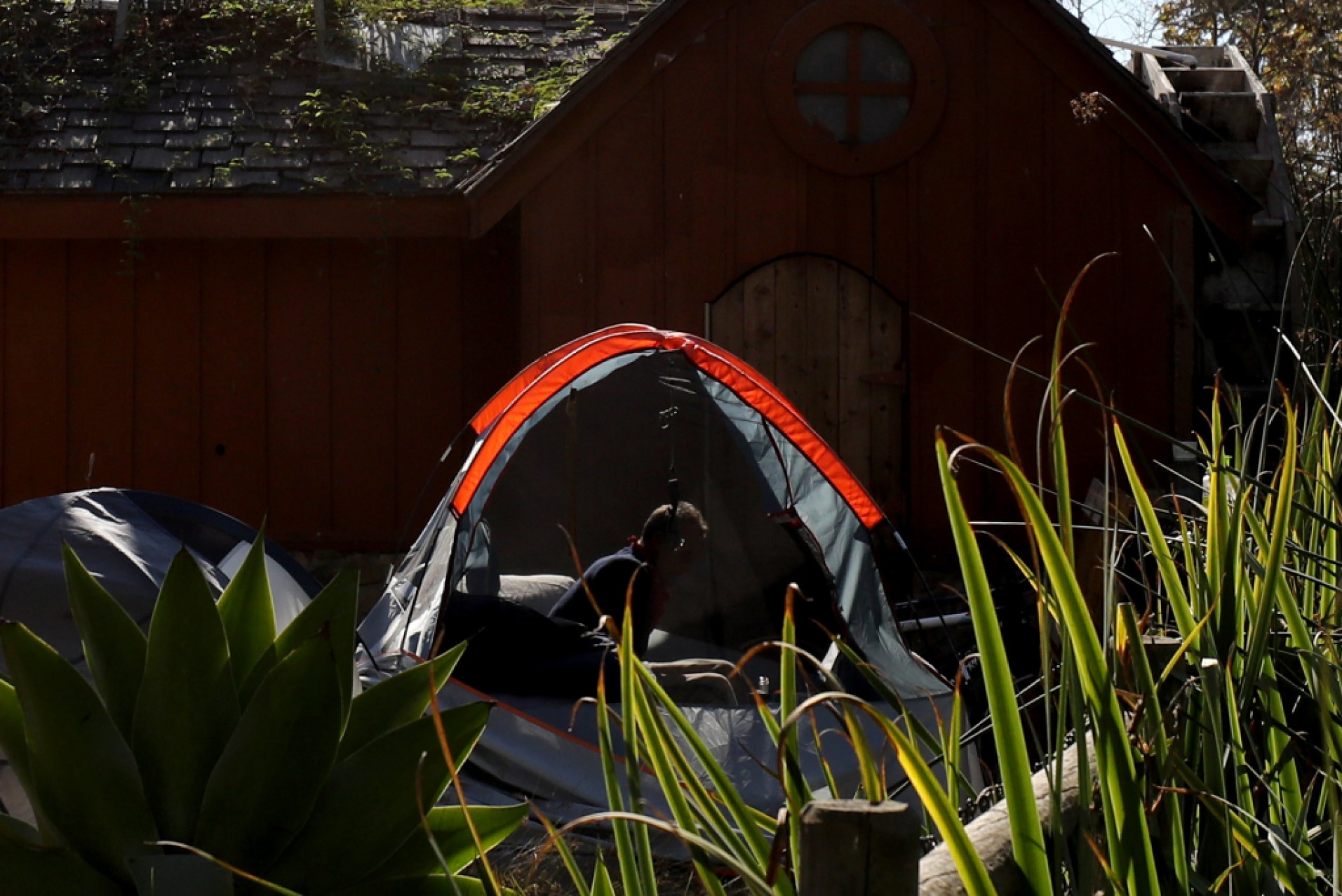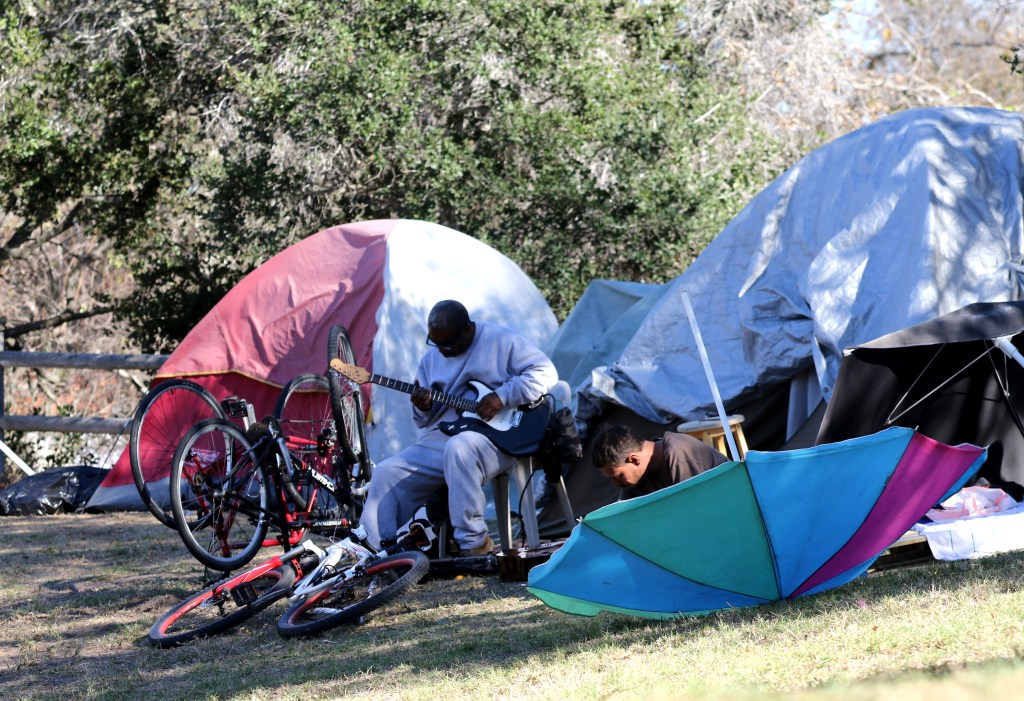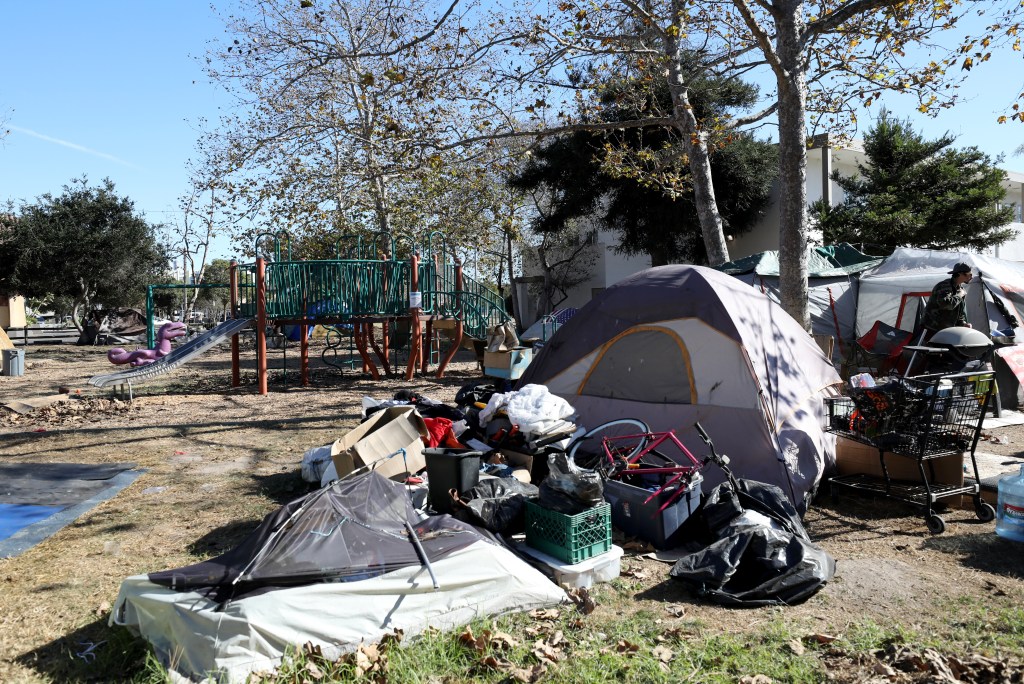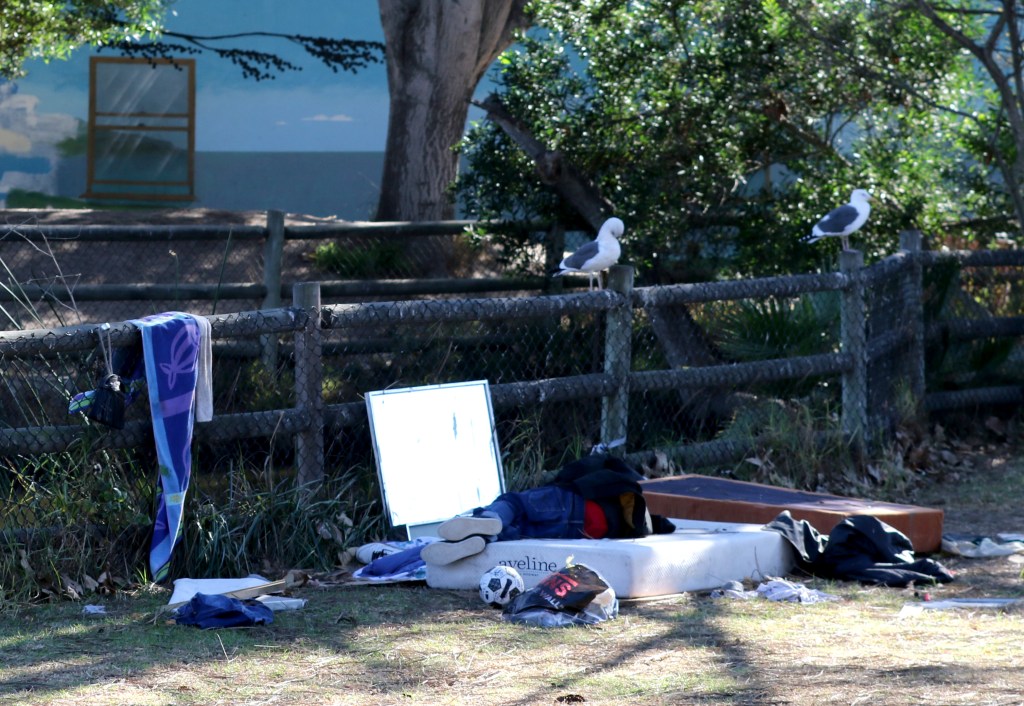Emergency Shelter Poised to Open at Veterans’ Memorial Building on Cabrillo Boulevard
Santa Barbara County Supervisors Approve Spending $900,000 for ‘Pallet Village’ in Isla Vista
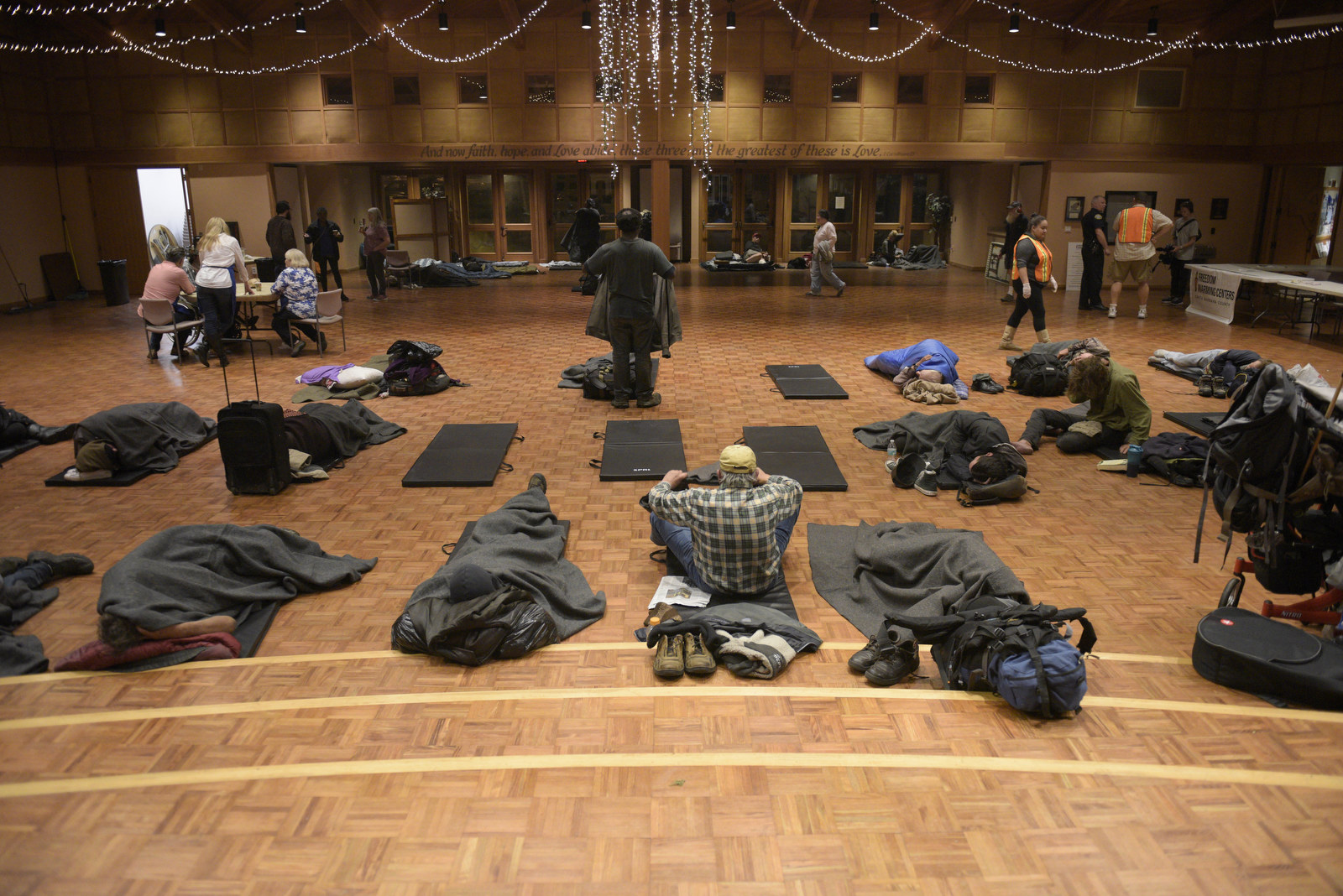
In response to COVID-inspired safety considerations, this year’s South Coast emergency winter warming shelter will be provided at the Veterans’ Memorial Building on Cabrillo Boulevard, not the rotating church auditoriums where it’s been done the past 10 years. “Opening night” for the new shelter space is this Sunday, November 15, but unless the temperatures drop to 35 degrees — or there’s more than a 50 percent chance of rain — that opening is more theoretical than real.
With temperatures dipping into the low 40s at night and the wind blowing hard, some homeless advocates are arguing the need for such respite is now, not later. But organizers running the emergency shelter say that changing the trigger points for opening from 35 degrees to 40 would add to the operational costs at a time when the County of Santa Barbara has already increased its commitment to the shelter by $101,000.
According to Erin Wilson — who, along with Unitarian minister Julia Hamilton, is overseeing this year’s operations— this year’s total budget is $350,000; last year, by contrast, it was $250,000. That money buys the community up to 50 nights of emergency winter shelter.
Get the top stories in your inbox by signing up for our daily newsletter, Indy Today.
Officially, the shelter is known as the Freedom Warming Shelter and was named after a homeless person who froze to death at night while parked in his wheelchair outside the homeless shelter on Cacique Street about 15 years ago. As the number of homeless deaths spiked due to harsh weather conditions, the demand for additional shelter space gave rise to makeshift warming centers organized on an ad hoc basis by communities of faith. Over time, this system became more formalized.
On any given night, Wilson said, the vets center shelter will be capable of handling up to 80 people. Because of COVID, she said, none of the regular church volunteers would be staffing the shelter this year, though volunteers will still be gathering at their churches of origin to help prepare meals. Wilson said additional staff was hired to make sure the shelter was kept adequately sanitized.
Guests will be screened upon entry, she said, to make sure they are not exhibiting any obvious symptoms consistent with COVID. They will be greeted by staff wearing PPE, passing out masks, and taking the temperatures of all entrants. Those who exhibit symptoms of concern will be isolated in a pop-up facility outside and screened by personnel with the County Public Health Department.
“We’re working really, really hard to activate as safely as possible and still provide help to those in need of shelter,” said Wilson.
Any year, estimating the number of overnight guests is always a crap shoot; this year it’s even more so. “It’s hard to know,” Wilson added. “We do expect an increase in the number of homeless this year, economic realities being what they are because of COVID. We may see different people than the ones we’re used to seeing.”
In a separate but related action, the county supervisors all but greenlighted plans to create a “Pallet Village” in Isla Vista, a collection of about 20 small pop-up structures to house the homeless people who have congregated there in increasing numbers since the advent of the COVID pandemic. The hope is to have these new tiny homes — ranging in size from 64 square feet to 100 — purchased, delivered and installed on the parking lot shared by the Isla Vista Recreation & Parks District (IVRPD) and the Isla Vista Community Center by mid-December and have them remain until mid-June.
Managing this new community — and coordinating the delivery of a wide array of services — will be the Good Samaritan Shelter out of Santa Maria. Combined, all this will cost $900,000 and will come out of its reservoir of federal COVID relief funds.
According to county projections, this new village would provide 4,000 bed nights of shelter for 50 distinct individuals. Of these, it’s projected that 15 percent might reasonably be expected to transition into longer-term housing. (County Supervisor Gregg Hart noted that 53 of more than 100 Santa Barbara homeless residents sheltered in motel rooms as a result of the statewide Project Roomkey effort were moved into long-term housing.)
According to the company manufacturing these pop-up homes — Pallet — the structures can be assembled within an hour. They can also be used multiple times. Each easy-to-assemble abode costs $2,450, but when heat and electricity are added, the per unit cost jumps to $8,000. The total expenditure for the structures themselves will be $160,000. Because of restrictions on the federal funding, the program can run longer than six months.
Third District Supervisor Joan Hartmann—in whose district Isla Vista lies—and her assistant Gina Fischer led the charge making the arrangement happen. Hartman estimated the number of homeless people erecting tents and setting up digs in Isla Vista parks has doubled in the past several months, prompting complaints about broken glass, human feces, drug overdoses, clutter, public inebriation, sexual violence, and, above all, fire risk. Although there have been no fires associated with any of the homeless encampments in Isla Vista, the county Fire Marshall declared three parks posed imminent fire hazards.
Hartmann noted the encampments pose a danger to their own occupants because of the intensity of flammable clutter and debris. In addition, she stated some of the camps directly about residential properties, increasing the risk of residential fires as well. County Fire Marshall Rob Hazard stated in a previous interview that in such circumstances, night fires might erupt faster than fire fighters could respond, posing a serious risk.
Speaking in favor of the new Pallet Village was Father John Hedges, a longtime pastor active with the homeless community in Isla Vista. He described the Pallet Village as being both “compassionate and wise,” not to mention, “elegant.” He likened the plight of people sleeping on the streets and parks of Isla Vista to that of a “Category Five storm,” akin to Hurricane Katrina, Sandy, or Michael.
Although the proposal still has a few hoops to jump through, it got a warm reception from the county supervisors, more than a few of whom made it clear they will be looking at this pop-up village as a possible template for addressing the homeless issue elsewhere throughout the county.
Every day, the staff of the Santa Barbara Independent works hard to sort out truth from rumor and keep you informed of what’s happening across the entire Santa Barbara community. Now there’s a way to directly enable these efforts. Support the Independent by making a direct contribution or with a subscription to Indy+.

